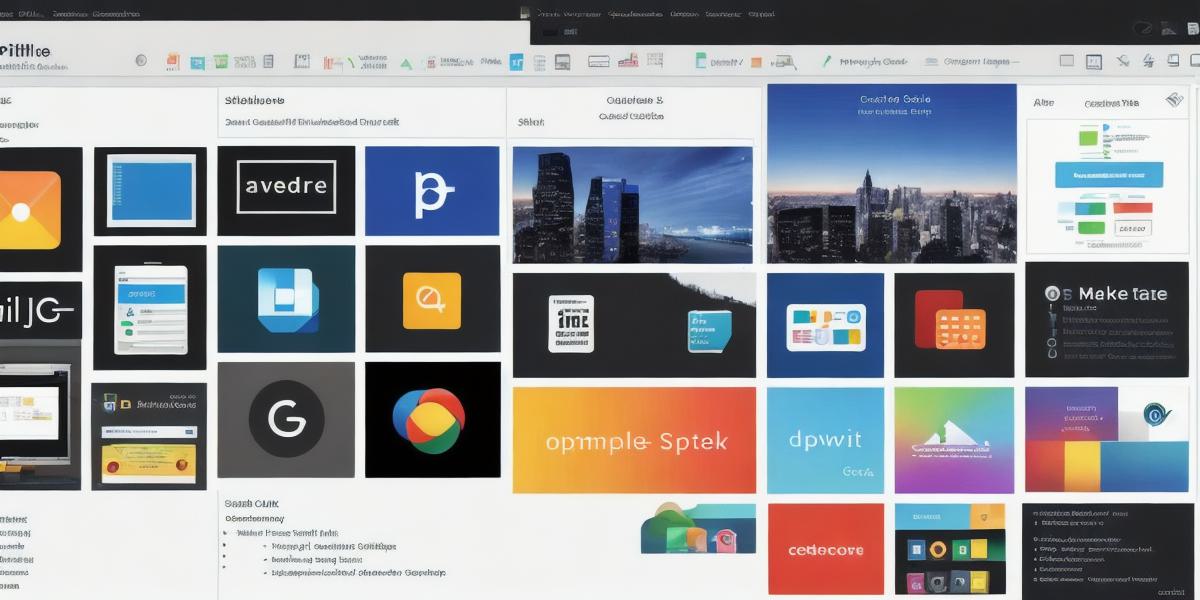The Ultimate Guide to Software Development Platform Definition

As a software development professional, you know that selecting the right development platform is crucial for creating successful applications. But with so many options available, how do you choose the one that’s best suited for your needs? This ultimate guide to software development platform definition will help you understand what makes a great development platform and why it matters.
What is a Software Development Platform?
A software development platform (SDP) is a set of tools, frameworks, and technologies that are designed to make it easier for developers to create applications. It provides a consistent and streamlined environment for developers to work in, which can save time and resources.
The key components of an SDP include the following:
1. Development Environment: This includes the tools and software that developers use to write code, such as integrated development environments (IDEs), debugging tools, version control systems, and compilers. 2. Programming Languages: An SDP typically supports multiple programming languages, which allows developers to choose the language that’s best suited for their project. 3. Frameworks and Libraries: These provide pre-built components and functionality that can be used to speed up development and reduce coding time. 4. Cloud Services: Many SDPs include cloud services that allow developers to host their applications in the cloud, which can make it easier to deploy and scale applications.
Why is a Software Development Platform Important?
Using an SDP can have a significant impact on your development process.
Here are some of the key benefits of using an SDP:
1. Increased Productivity: An SDP provides a consistent and streamlined environment for developers, which can help them work more efficiently and productively. 2. Faster Development Time: With pre-built components and functionality available through frameworks and libraries, developers can spend less time coding and more time testing and deploying their applications. 3. Reduced Costs: An SDP can help reduce costs by reducing development time and making it easier to scale applications as needed. 4. Enhanced Collaboration: Many SDPs include collaboration tools that allow developers to work together more effectively, regardless of where they are located. Case Studies: Real-Life Examples of Software Development Platforms in Action To illustrate the impact of software development platforms, let’s take a look at some real-life examples. 1. React Native: React Native is an open-source SDP that allows developers to build mobile applications for both iOS and Android using just one codebase. This has helped businesses save time and resources by allowing them to develop and maintain multiple applications with a single team. 2. Node.js: Node.js is a JavaScript runtime environment that’s often used for building server-side applications. It’s highly scalable and can handle large volumes of traffic, making it a popular choice for businesses that need to build high-performance applications. 3. Ruby on Rails: Ruby on Rails is a web application framework that’s written in the Ruby programming language. It’s known for its simplicity and ease of use, which has made it a popular choice for startups and small businesses. Expert Opinions: What Developers Say About Software Development Platforms We asked a group of software developers to share their thoughts on software development platforms.
Here’s what they had to say:
“I love using Node.js because it’s highly scalable and allows me to build fast, efficient applications. Plus, the community is really great, which makes it easy to find help when I need it.”
– John D., Software Engineer
“React Native has been a game-changer for our business. We can develop and maintain multiple applications with a single team, which has saved us so much time and resources.” – Sarah K., CTO
FAQs: Frequently Asked Questions About Software Development Platforms
Q: What makes a great software development platform?
A: A great SDP should provide a consistent and streamlined environment for developers, include multiple programming languages, frameworks and libraries, cloud services, and collaboration tools. Q: Can I use a software development platform to build both web and mobile applications? A: Yes, many software development platforms support both web and mobile application development, such as React Native and Xamarin.








